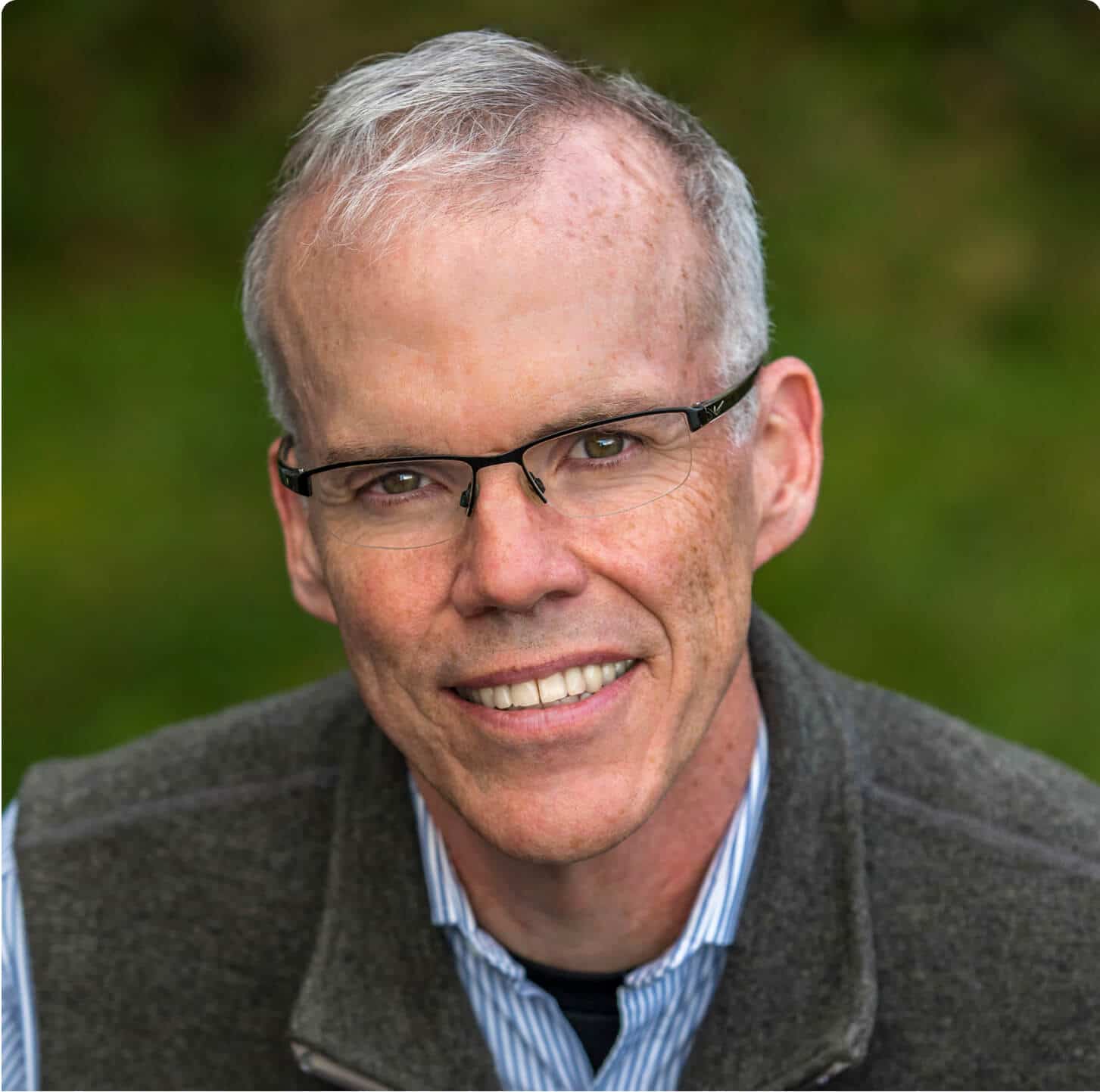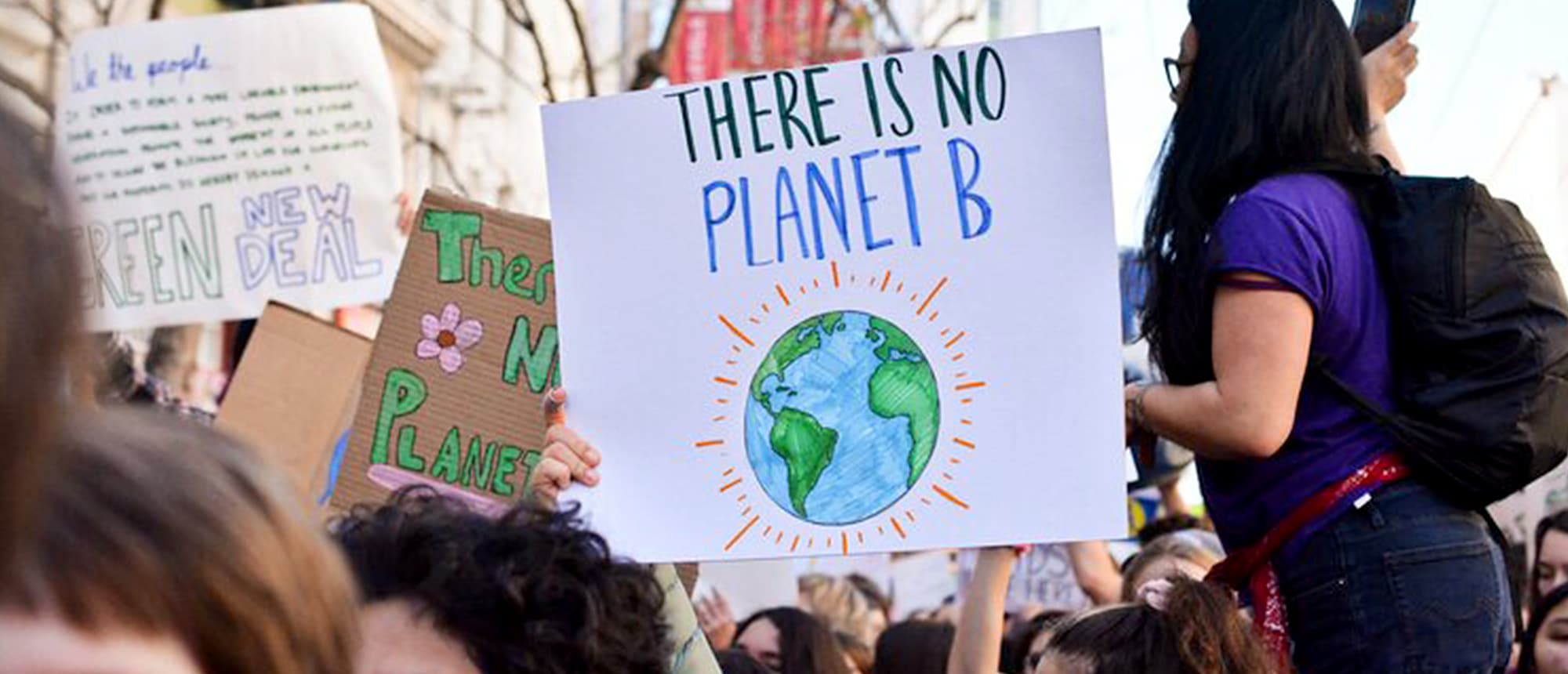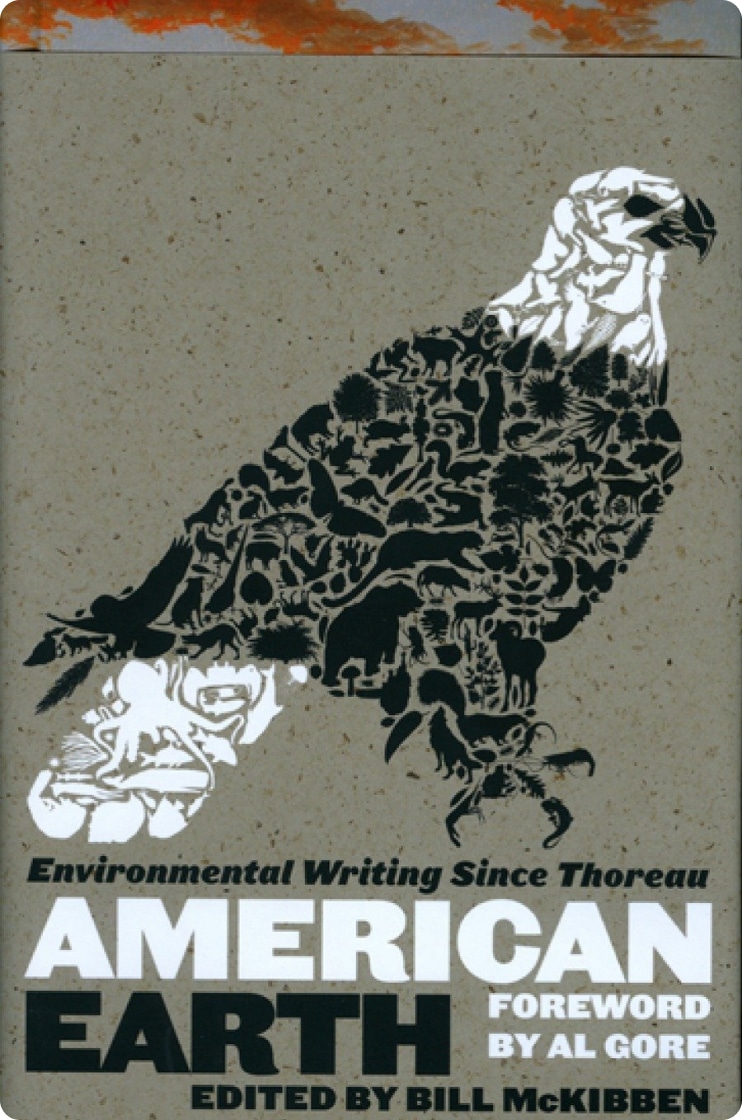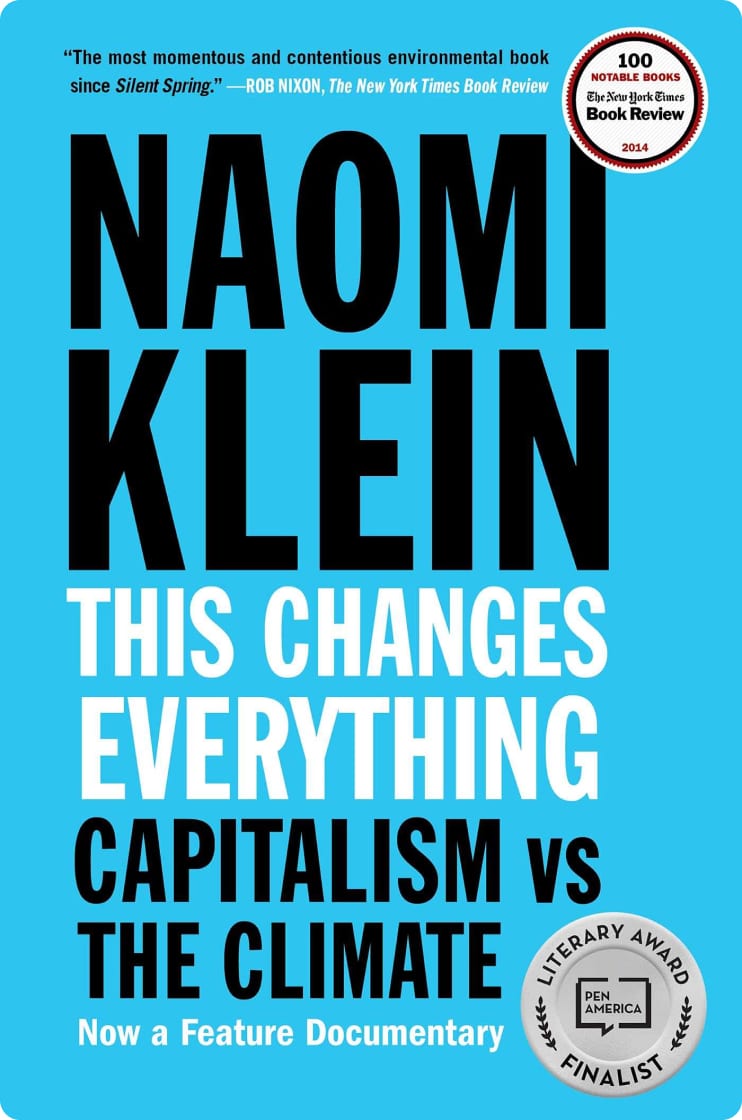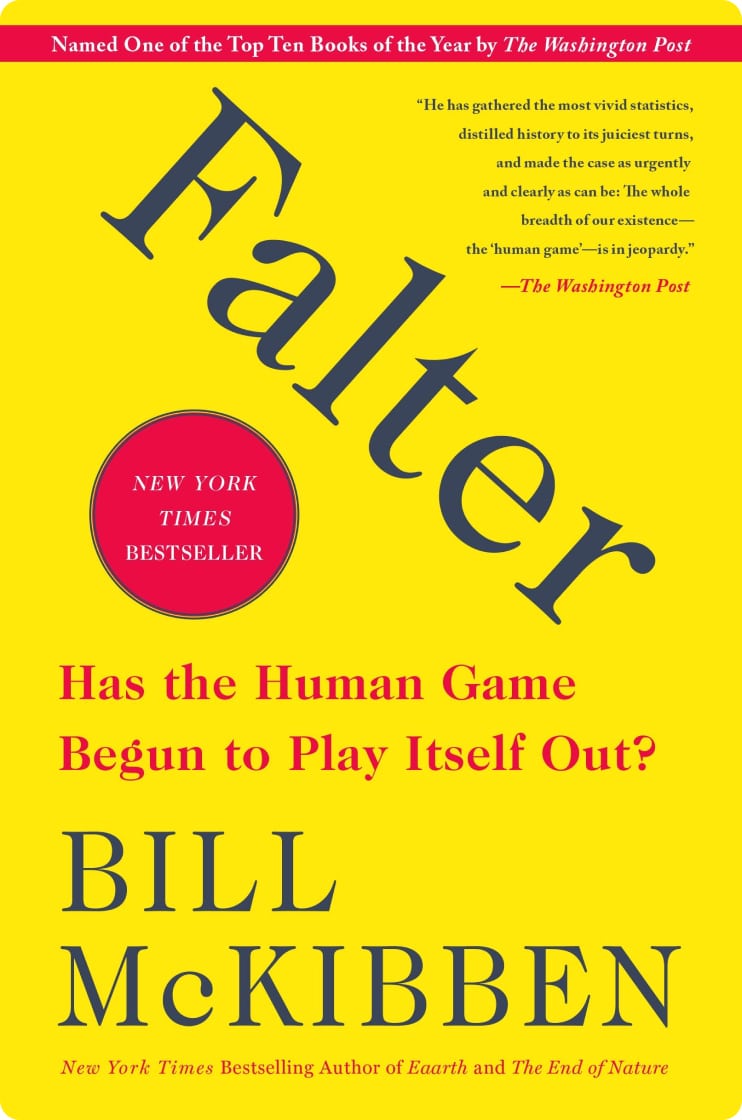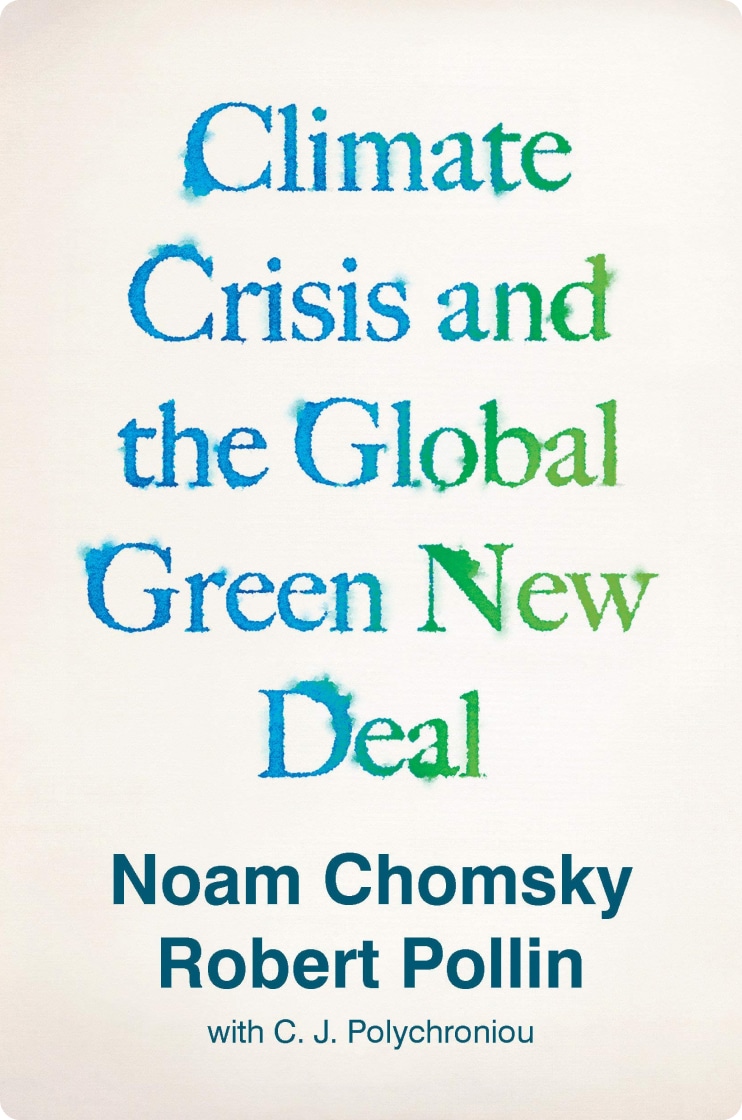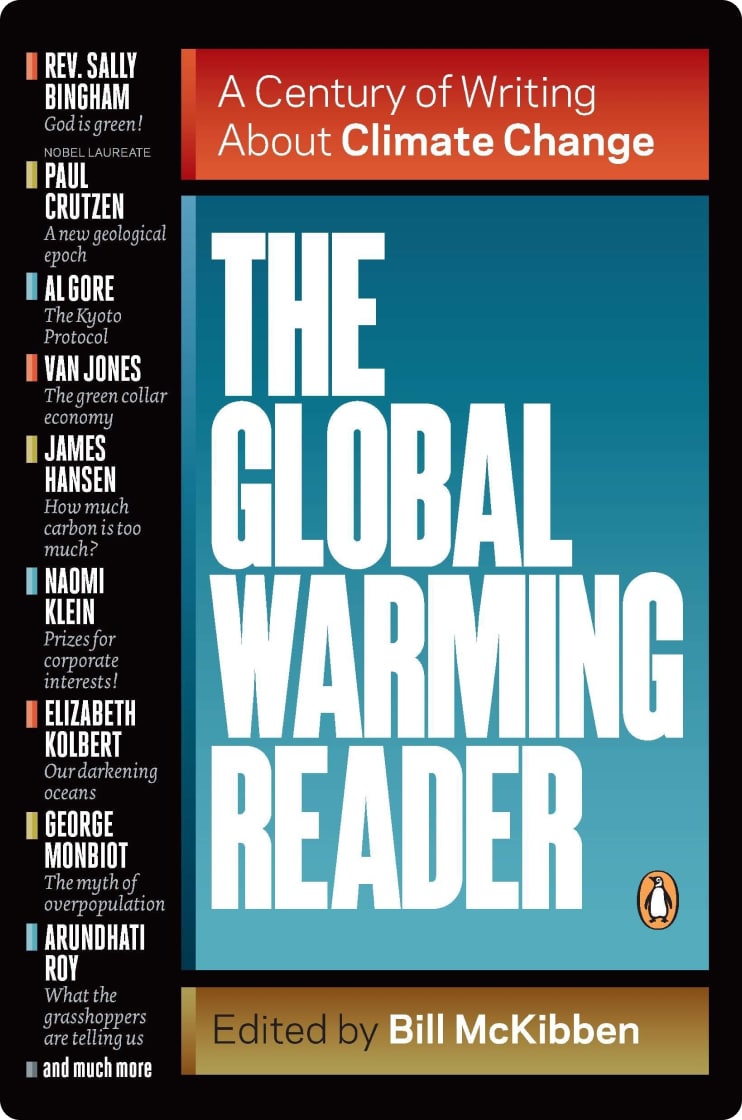Climate Anxiety Makes Good Sense
Even as we begin to emerge from the stress of the pandemic year, mental-health professionals are noting a steady uptick in a different form of anxiety—the worry over climate change and the future that it will bring.
The latest survey research from Yale and George Mason universities shows about forty per cent of Americans feeling “disgusted” or “helpless” about global warming; a poll from the American Psychiatric Association last autumn found that fifty-five per cent of respondents were concerned about the effects of climate change on their own mental health. The effects seem particularly harsh on new mothers, and, indeed, a fear of adding to the climate problem and of the disintegration it might cause seems to be deterring large numbers of young people from having kids of their own. Understandably, the fear of a wrecked future increases as you descend the age scale: a March survey of Gen-Z Americans aged between fourteen and twenty-four found that eighty-three per cent are concerned about the health of the planet (although nearly half said that they have been feeling a little better since Biden took office).
Perhaps there are ways in which this fear is a luxury—Sarah Jaquette Ray, who literally wrote the book on climate anxiety, noted recently that it is an “overwhelmingly white” phenomenon. Not because people of color care less about the climate crisis (in fact, they care more), but because they’ve faced other existential crises. “The prospect of an unlivable future has always shaped the emotional terrain for Black and brown people, whether that terrain is racism or climate change,” Ray wrote. “Exhaustion, anger, hope—the effects of oppression and resistance are not unique to this climate moment. What is unique is that people who had been insulated from oppression are now waking up to the prospect of their own unlivable future.” Eric Holthaus, in his always interesting Substack newsletter on climate, echoed some of these thoughts, after describing his own anxiety as so crippling that, during attacks that lasted weeks, he’d “been unable to write, unable to interact with friends, unable to function normally.” But, he said, since those “who have already been marginalized by centuries of oppression will be hurt the worst… our job, as the climate anxious, is to repair that oppression, repair that marginalization, to make sure you’re not offloading your anxiety onto someone else in ways that are causing more harm.”
That’s fair enough—action has always seemed the best salve to me. (And for those for whom it is not enough, the Climate Psychology Alliance North America has published a directory of “climate-informed therapists.”) But I think there’s another reason that climate change can be so uniquely anxiety-producing: we’re not used to dealing with fights that we don’t know we can win. Martin Luther King, Jr.,’s statement, quoting the abolitionist Theodore Parker, that “the arc of the moral universe is long, but it bends toward justice” was comforting in a civil-rights fight that required—and requires—enormous courage: they meant, I think, ‘this may take a while but we’re going to win.’ But a different kind of courage is needed for the climate battle, because the arc of the physical universe is short and it bends toward heat. If we don’t win soon, we will never win, because the Earth is rushing toward irrevocable tipping points. We’ve already passed some—there’s no plan afoot to refreeze the Arctic. And clearly things will get much worse before they (possibly) start to stabilize; we’ve raised the temperature a degree Celsius already, and the most optimistic thinkers on the planet reckon that we might just be able to top out at 1.5 degrees.
All of which is to say that we are right to be anxious. There are profound reasons to hope that we’re about to make serious progress: the sudden arrival of cheap renewable energy; the shifting zeitgeist. (As is often the case, Rebecca Solnit sums them up with particular power.) Even if we catch some breaks from physics, though, it’s going to be a tough few decades. And what will make it toughest may be the (very American) assumption that we have to endure the anxiety by ourselves, in our own heads. I’ve found the simple solidarity of movements at least as useful as the opportunities for action that they provide; just knowing that lots of other people are at work on the same problem is a solace, and a goad to keep working. It’s one reason that I’m glad that vaccinations are proceeding apace. It’ll be strategically useful to be back in the streets, but it will also be psychologically useful: we are shoulder to shoulder on Zoom, but it’s not quite the same.
Passing the Mic
Maxine Bédat is the director of the New Standard Institute (N.S.I.), an N.G.O. working to reform the fashion industry. Her new book, Unraveled, which will be published next month, follows a pair of blue jeans through its planetary life cycle, illuminating the environmental and human toll along the way. (Our conversation has been edited.)
What can you learn about how our world is organized by following a pair of jeans through its travels to your closet?
By following a pair of jeans, we uncover how the world is woven together and coming apart at the seams. As cotton makes its way to the nearest port and then is shipped to China, which exports about thirty-seven per cent of the world’s textiles, we can trace the laws that created our globalized world, which brought access to cheaper goods and somewhat improved livelihoods for workers outside the West, but with enormous unintended costs. So today our jeans are produced with the help of the cheapest and dirtiest nonrenewable energy sources, mainly coal. For this reason, clothing contributes from four to eight per cent of total global carbon emissions, more than France and Germany combined, and is on track to take up more than twenty-five per cent of the world’s global carbon budget.
Finally, by exploring the story of our jeans, we find ourselves almost exactly where we started. Just a few short miles from Osu Castle, in Ghana, from where people were put on slave ships to pick cotton in the American South, is Kantamanto Market, where many of the things that wealthy countries donate go in search of a second home. They very often end up as trash, in landfills. When I was there, an accidental fire broke out in a landfill that was at capacity in half the time projected, in part because of the dumping of all of our clothes.
Clearly our own individual decisions won’t aggregate fast enough or in large enough quantities to change the way this process works—but how have you come to think differently about your own wardrobe?
I used to be a purely emotional shopper, the kind who took to retail therapy when I was having a bad day or feeling insecure in a sea of influencers looking cute. If I was having a good day? I would celebrate with a new pair of shoes. In between meetings, I would seek to “treat myself” by stopping into retail stores, and, under the pressure of a sales associate, I would often walk out with clothes I didn’t even like at the time.
It’s a really stressful way to live, accumulating all that stuff. After this journey, I have definitely changed my relationship to my own wardrobe. I took guidance from research on habit formation and removed shopping cues from my daily routine. Goodbye, fashion influencers on my Instagram feed. I also did clean my closet, but not for altruistic reasons, as I know it means those pieces will head to the landfill or incinerator sooner rather than later. But I did it to be able to see the things I actually did like. Now, when I do make a purchase, I consider who owns and manages the company and whether they are people I want to support.
And what should we be thinking about in terms of laws that might actually make wholesale change?
I still believe in markets. But unfettered capitalism, the kind we have now, has to become a thing of the past, and quickly. We need some basic guardrails in which markets can exist, like insuring that all wages are living wages. If we look back at history, we see that the very idea of a corporation was actually created for projects that would benefit the common good—for things like bridges and hospitals. It is the people who give government power for these companies to exist, and we have the power to insure that business aligns for the benefit of the people.
Climate School
According to the Mongabay Web site, Midwestern farmers are beginning to experiment with planting rows of soybeans and corn between shrubs, such as hazelnuts—adding a high-value crop to their fields, while also sequestering carbon.
The students who led the campaign to persuade the University of Michigan to divest from fossil fuels have offered tips for others to follow. Meanwhile, a new Oxford study quantifies the monetary value of the climate battle: investors are demanding four times the return on coal investments as on renewable energy.
The German high court ruled that the government must do more to cut greenhouse-gas emissions. The case was filed by young people, and the judges’ found that their“fundamental rights to a human future” were at risk.
A rapidly deepening western drought has the San Joaquin Valley in its grip—the Los Angeles Times reports that years of drought have some people “openly questioning the future of farming” in that “vast and fertile” region. On large farms, in the past decade, there has been drilling “to depths of more than 1,000 feet to sustain thirsty citrus orchards and almond and pistachio groves that had drawn hedge funds and big corporations into the business.”
Three venerable climate scientists have published a useful critique of the idea of “net-zero” emissions, pointing out that such scenarios rely on carbon-removal technology that doesn’t yet exist—and may never exist—at the necessary scale. They write, “The problems come when it is assumed that these can be deployed at vast scale. This effectively serves as a blank cheque for the continued burning of fossil fuels and the acceleration of habitat destruction.”
ProPublica reports that researchers have found some major accounting flaws in a California plan that gives landowners “carbon credits,” which they can sell to polluters, such as oil companies, in return for not cutting down forests on their land. As a result, there may be between twenty and thirty-nine million “ghost credits” on the market “that didn’t preserve additional carbon in forests but did allow polluters to emit far more CO2.”
Scoreboard
Air pollution disproportionately affects people of color in the United States, a new study published in Science Advances confirms once again. “Nearly all major emission categories—consistently across states, urban and rural areas, income levels, and exposure levels—contribute to the systemic PM2.5 exposure disparity experienced by people of color,” the authors wrote.
Banks occasionally brag that they are reducing their use of energy in offices, or telling staff to fly less often. Bloomberg reports on a new study by the N.G.O. C.D.P. (formerly the Carbon Disclosure Project) that makes clear what a hollow boast that is: emissions from the loans they give to companies account for seven hundred times more emissions than their operations.
Epicurious, the Condé Nast recipe archive site, announced that it would not post new recipes using beef, because of the climate implications of raising livestock. The site pointed to research from the World Resources Institute showing that raising cows produces a lot more greenhouse-gas emissions than does rearing pigs or poultry; Eleven Madison Park, the Michelin three-star restaurant in Manhattan, explained that it will eschew meat entirely, on the ground that it was “becoming ever clearer that the current food system is simply not sustainable.” Meanwhile, activists at the group Soil4Climate published their own collection of recent research, “Hope Below Our Feet,” arguing that, if we dramatically change the way we raise cattle, the effect of their grazing on the soil would make it more able to soak up carbon. Such schemes aren’t yet part of the Biden Administration’s plan for a climate-friendlier agriculture, which does encourage carbon-sequestration practices, but the Wall Street Journal reports that the White House is finding at least a few allies in farm country.
The veteran climate journalist Jeff Biggers reminds us that coal companies continue to get the permits they need for mountaintop-removal coal mining in Appalachia. The practice has declined, but, as Biggers notes, “the West Virginia Department of Environmental Protection celebrated Earth Day by rubber-stamping a new strip-mining permit for an out-of-state coal company, slated to destroy 1,085 acres of forested ridges and wreak havoc for neighboring communities for the next eight years.” The Ohio Valley ReSource is producing an important podcast, Welcome to AppalachAmerica, about the region’s future.
Hawaii became the first state to declare an official climate emergency. Under the resolution, it commits to “statewide action that is rooted in equity, self-determination, culture, tradition, and the belief that people locally and around the world have the right to clean, healthy, and adequate air, water, land, food, education, and shelter.”
The Canadian government ruled last week that the people building a tar-sands pipeline to the coast of British Columbia need not reveal the names of the insurance companies underwriting the project. Since the people building the tar-sands pipeline are, in fact, the Canadian government, which purchased the project for 4.5 billion Canadian dollars, in 2018, it’s a perverse ruling, but one that illustrates the power of activists who target insurance companies in an attempt to slow down fossil-fuel expansion.
Scary new numbers indicate that the Amazon rain forest is now releasing more carbon than it stores. On Thursday, researchers reported in the journal Nature Climate Change that, between 2010 and 2019, Brazil’s Amazon basin released 16.6 billion tons of CO2, but drew down less than fourteen billion tons.
Warming Up
A new documentary short tells the story of one of the more remarkable episodes in American environmental history: in 1979, Mark Dubois chained himself to a rock in the Stanislaus River Canyon, in California, so that he would drown if the Army Corps of Engineers kept filling the reservoir behind a newly completed dam.
